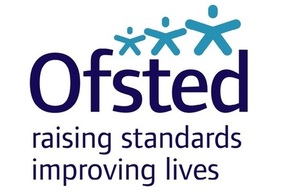Protecting disabled children
Disabled children are at risk of slipping through the child protection net, according to an Ofsted report published today.

Ofsted logo
The study found that many children and their families receive good multi-agency early support but too many children had child protection needs which went unidentified.
‘Protecting disabled children: thematic inspection report’ looks at the effectiveness of child protection work for disabled children in 12 local authorities, examining 173 cases and tracing the child’s journey through the system to understand how well disabled children are protected from harm.
Deputy Chief Inspector, John Goldup said:
Research suggests that disabled children, sadly, are more likely to be abused than children without disabilities. Yet they are less likely than other children to be subject to child protection. This report examines in depth, through the experiences of individual children, some of the reasons for that discrepancy.
Inspectors saw some fantastic examples of good early multi-agency support for children and their families. But in some cases, the focus on support for parents and their children seemed to obscure the child’s need for protection. The report highlights the need for greater awareness among all agencies of the potential child protection needs of disabled children, for better and more coordinated assessments, and for more effective monitoring by local safeguarding children’s boards. We cannot accept a lower standard of care and protection for disabled children than we expect for all our children.
The report found, in most cases, multi-agency early support work was well coordinated and played a valuable role in tackling early emerging concerns. Disabled children and their families had access to a wide range of early support services including parenting support, short day breaks and outings to leisure activities.
However, child protection concerns were not always clearly recognised or dealt with early enough, and decisions and assessments did not consistently taking into account historical concerns. Inspectors found cases in which poor care amounted to neglect. In these cases the impact of poor parenting on the child was not clearly seen, and the focus on the child was lost.
For example, in a case of a young person with autism, the young person and the family were receiving support. But it was not until an investigation was undertaken into allegations that a sibling had been abused that serious concerns regarding neglect were identified for this young person.
However, when children did become subject to child protection plans, effective action was taken to reduce risks or improve the quality of parenting, and in the majority of cases children made good progress. Parents understood why their children were subject to plans and most accepted the reasons for the concerns.
In a case where there were concerns about neglect, a mother said that having her child on a child protection plan helped her to see the seriousness of what was happening. The social worker helped her to be organised so that she did not miss her child’s appointments and knew how to ring and rearrange them. She said one of her problems had been not asking for help and that she could now see that there were people to help her and that she needed to accept this help.
Although local authorities and local safeguarding children boards (LSCBs) have access to a large amount of data on disabled children, the report found that most had not made good use of this in evaluating the impact of services on protecting disabled children. This meant that it was very difficult for local authorities to know if there were unidentified risks for disabled children within their communities.
The report calls on local authorities and LSCBs to ensure that thresholds for child protection are well understood and rigorously applied at every stage in work with disabled children, and to establish robust systems to assess and evaluate the quality and impact of professionals’ work with them.
Notes to editors
-
12 local authorities were surveyed looking at a sample of 173 covering multi-agency prevention and support cases; contacts and referrals to children’s social care; initial assessments; child protection enquiries or strategy meetings; children in need cases; and child protection cases.
-
In each local authority, interviews with senior managers and practitioners were conducted. Inspectors met with 18 parents, 10 of whom had disabled children with child in need plans and eight of whom had children subject to child protection plans.
-
The children in need census as at 31 March 2011 showed that there were 382,400 children in need in England of whom 54,100 (14.2%) were recorded as having a disability. At that time 42,700 (11%) children were subject to a child protection plan of whom 1,600 (3.8%) were recorded as having a disability. Children with a recorded disability were therefore less likely to be the subject of a child protection plan than other children in need.
Media enquiries
Clive House
70 Petty France
London
SW1H 9EX
Email pressenquiries@ofsted.gov.uk
Monday to Friday, 8:30am to 6pm 0300 013 0415
Out of hours duty press officer 07919 057 359